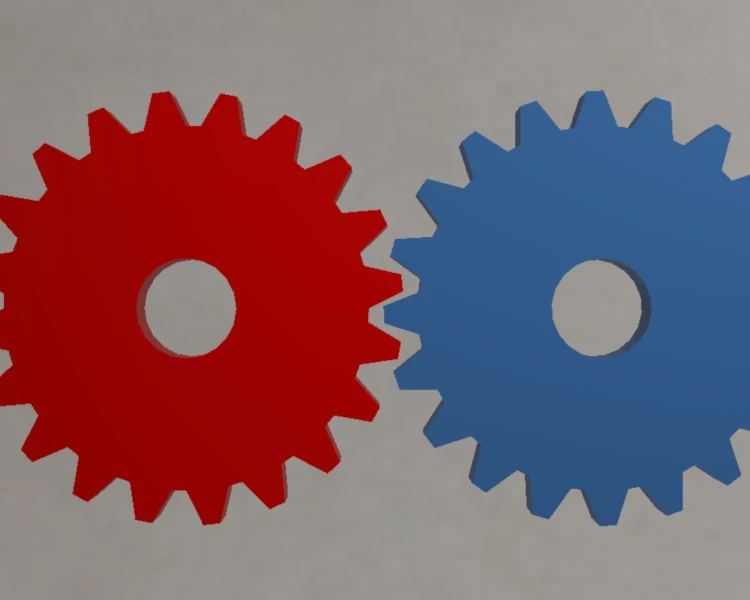ebots is a cutting-edge, open-source robot simulator that has been designed to provide a platform for multi-disciplinary development in the field of robotics. The Webots platform allows for realistic simulations of various types of robots in different environments, enabling researchers, educators, and developers to model, program, and simulate their robots.
History and Overview
Webots was originally created in 1996 by Dr. Olivier Michel at the Swiss Federal Institute of Technology in Lausanne, Switzerland. It was initially commercial software until it was open-sourced by Cyberbotics, the company behind Webots, in December 2018.
The platform offers a variety of pre-designed models of real robots. Ranging from small differential wheeled robots to complex humanoid robots. Webots uses the ODE (Open Dynamics Engine) for detecting collisions and simulating rigid body dynamics. The ODE library allows for accurate and realistic simulations of physical properties, such as forces, torques, friction, and inertia.
Key Features
1. High-Fidelity Physics and Rendering
Webots uses advanced physics engines, including the Open Dynamics Engine (ODE) and Bullet, for accurate simulation of the physical world. These engines model the kinematics and dynamics of robots and their environment, including properties like friction, collisions, and inertia.
Rendering in Webots is achieved using OpenGL, offering high-quality 3D visualizations. The simulator includes realistic rendering of shadows, reflections, and textures, which adds to the believability of the simulation.
2. Extensive Robot and Environment Models
Webots comes with a library of over 40 different robot models, including wheeled robots, legged robots, drones, and humanoid robots. Additionally, it includes a variety of sensors and actuators, such as cameras, lidars, GPS, IMUs, and more. Which can be attached to the robot models.
Moreover, to simulate different environments, Webots provides a rich set of 3D objects, like buildings, trees, roads, and other structures. Users can create custom environments by combining these objects, and even import their own 3D models.
3. Cross-Platform and Multi-Language Support
Webots runs on major operating systems including Windows, MacOS, and Linux. It also supports multiple programming languages. Robots can be controlled using languages such as C, C++, Python, Java, MATLAB, ROS, and more. Making the platform versatile and adaptable to various users’ needs.
4. Robot Controller Programming
In Webots, each robot is controlled by a program called a robot controller. These controllers can be written in several programming languages and can communicate with each other, enabling multi-robot simulations.
5. Integration with ROS
Webots can be integrated with the Robot Operating System (ROS), a flexible framework for writing robot software. This allows for the development and testing of ROS-based software in a simulated environment before deploying it on a physical robot.
Applications of Webots
Webots is widely used in both academic and industrial settings.
In academia, it’s used for teaching purposes, enabling students to learn about robotics, computer science, control systems, and artificial intelligence in a hands-on manner. It’s also used for research in areas such as swarm robotics, humanoid robotics, autonomous vehicles, and more.
In industry, Webots is used for rapid prototyping and testing of robotic systems. It helps in reducing the development time and costs by allowing developers to test their algorithms in a risk-free virtual environment before implementing them on a physical robot.
Conclusion
Webots is a powerful robot simulator that provides an effective platform for robot modeling, programming, and simulation. So its open-source nature, multi-language support, high-fidelity physics, and rendering engines, along with the vast library of robot models and environments. Make it a robust tool for both educational and commercial uses. Also, by leveraging Webots, users can experiment, prototype, and test complex robotic systems in a safe and cost-effective manner. Pushing the boundaries of innovation in the field of robotics.
The integration of Webots with other advanced tools and frameworks, such as ROS, further enhances its usability and scope. Moreover, by enabling users to develop and test ROS-based software in a simulated environment. It bridges the gap between simulation and real-world application.
In conclusion, as robotics continues to play a pivotal role in various sectors, including healthcare, manufacturing, logistics, and more, platforms like Webots will continue to be instrumental in fostering innovation, facilitating learning, and accelerating the development of efficient, reliable, and versatile robotic systems.
